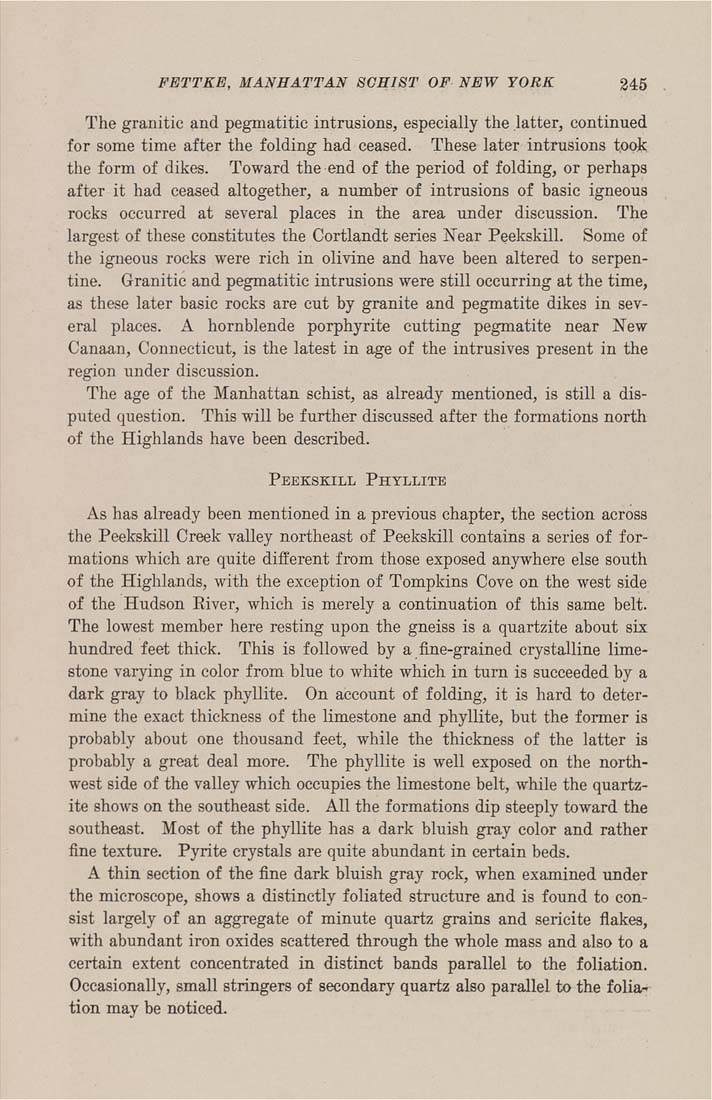FETTKE, MANHATTAN SCHIST OF NEW YORK 345
The granitic and pegmatitic intrusions, especially the latter, continued
for some time after the folding had ceased. These later intrusions toojc
the form of dikes. Toward the end of the period of folding, or perhaps
after it had ceased altogether, a number of intrusions of basic igneous
rocks occurred at several places in the area under discussion. The
largest of these constitutes the Cortlandt series Near Peekskill. Some of
the igneous rocks were rich in olivine and have been altered to serpen¬
tine. Granitic and pegmatitic intrusions were still occurring at the time,
as these later basic rocks are cut by granite and pegmatite dikes in sev¬
eral places. A hornblende porphyrite cutting pegmatite near New
Canaan, Connecticut, is the latest in age of the intrusives present in the
region under discussion.
The age of the Manhattan schist, as already mentioned, is still a dis¬
puted question. This will be further discussed after the formations north
of the Highlands have been described.
Peekskill Phyllite
As has already been mentioned in a previous chapter, the section across
the Peekskill Creek valley northeast of Peekskill contains a series of for¬
mations which are quite dift'erent from those exposed anywhere else south
of the Highlands, with the exception of Tompkins Cove on the west side
of the Hudson Eiver, which is merely a continuation of this same belt.
The lowest member here resting upon the gneiss is a quartzite about six
hundred feet thick. This is followed by a fine-grained crystalline lime¬
stone varying in color from blue to white which in turn is succeeded by a
dark gray to black phyllite. On account of folding, it is hard to deter¬
mine the exact thickness of the limestone and phyllite, but the former is
probably about one thousand feet, while the thickness of the latter is
probably a great deal more. The phyllite is well exposed on the north¬
west side of the valley which occupies the limestone belt, while the quartz¬
ite shows on the southeast side. All the formations dip steeply toward the
southeast. Most of the phyllite has a dark bluish gray color and rather
fine texture. Pyrite crystals are quite abundant in certain beds.
A thin section of the fine dark bluish gray rock, when examined under
the microscope, shows a distinctly foliated structure and is found to con¬
sist largely of an aggregate of minute quartz grains and sericite flakes,
with abundant iron oxides scattered through the whole mass and also to a
certain extent concentrated in distinct bands parallel to the foliation.
Occasionally, small stringers of secondary quartz also parallel to the folia¬
tion may be noticed.
|








